Let the wind howl and the salt spray fly—these plants laugh at a storm! On briny shores where other plants wilt, our 20 toughest champions shrug off salt and sand. They anchor shifting dunes, guard eroding banks, and paint the coast with bursts of fearless color. No frills here. Meet shrubs with waxy shields, grasses that bend but refuse to snap, groundcovers on sandy patches, and wildflowers that mock dry spells. Your seaside garden is about to go from battered to brilliant. Deep roots lock down soil, bees and butterflies flock to bright blooms, and silvery leaves gleam even in gale-force winds. They need no fancy soil fixes or constant pampering. No permits, no fuss. Dreaming of a living fence? Picture sea-spray sentries weaving natural hedges— hands-off structure with zero stakes. Grab your gloves and salt-sprayed spade— scroll down, and let your coast thrive!
Beach Rose (Rosa rugosa)
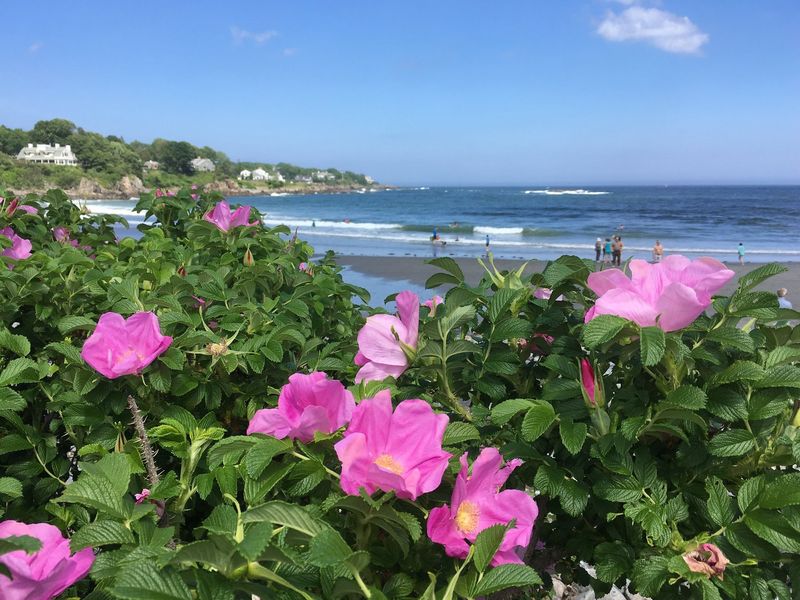
The Beach Rose, with its vibrant pink blooms and glossy green leaves, adds a splash of color to any coastal garden. It thrives in sandy soils and withstands salt spray, making it ideal for seaside locations.
Often found growing wild along beaches, this hardy shrub requires minimal care. Its fragrant flowers bloom throughout the summer, followed by bright red rose hips in the fall.
These hips are not only decorative but also edible, providing a source of vitamin C. This makes the Beach Rose both beautiful and practical.
Sea Thrift (Armeria maritima)
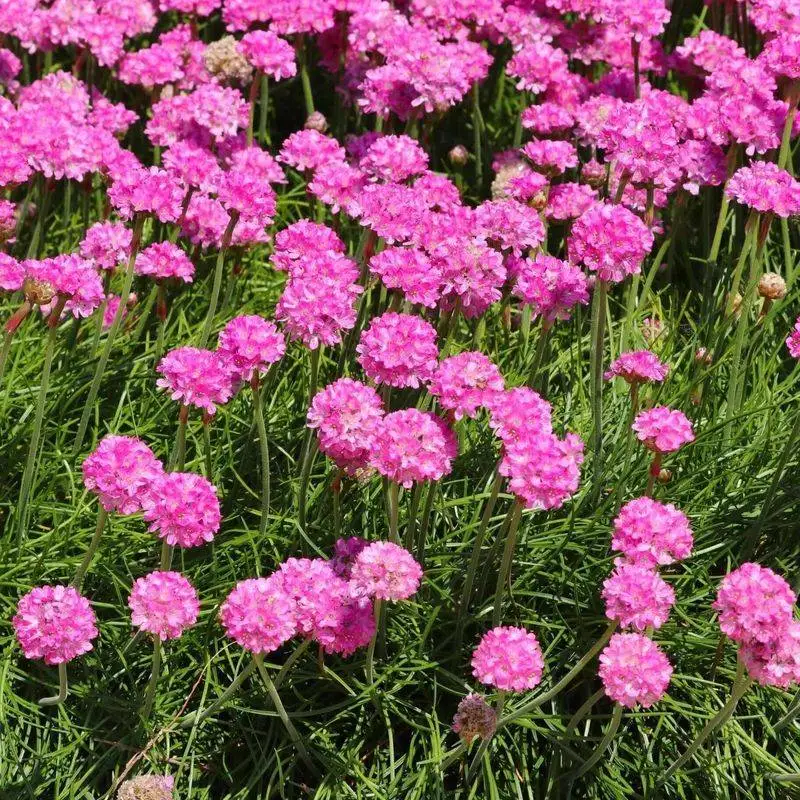
Sea Thrift, or Armeria maritima, is a charming perennial known for its tufted mounds of grass-like leaves and pink, pom-pom flowers. It’s a resilient plant that smiles at salty air and strong winds.
Perfect for rockeries or borders, its tidy clusters bring a neat aesthetic to your garden while requiring very little maintenance.
In addition to its visual appeal, Sea Thrift attracts pollinators like bees and butterflies, enhancing biodiversity in your coastal plot. Despite its delicate appearance, it’s a tough survivor.
Buffalo Grass (Bouteloua dactyloides)

Buffalo Grass is a low-maintenance choice for those seeking lush green coverage in challenging coastal conditions. Its curly leaf blades form a dense mat that resists erosion and thrives in sandy soils.
With minimal watering needs, it is exceptionally drought-tolerant and thrives in full sun. This makes it particularly suitable for dry, windy seascapes.
Buffalo Grass also provides a soft, barefoot-friendly texture, inviting you to walk across your garden with ease, all while supporting local wildlife habitats.
Sea Holly (Eryngium maritimum)

Sea Holly is a striking plant recognized for its spiky, metallic-blue flowers, giving an eye-catching contrast to sandy beachscapes. Its silvery foliage reflects sunlight, adding a shimmering effect.
This robust perennial thrives on neglect, flourishing in poor, sandy soils where few others can. It is also highly resistant to salt spray and strong winds.
Sea Holly attracts a variety of pollinators, including bees and butterflies, making it a vital component of coastal biodiversity. Its unique appearance makes it a conversation starter.
Lavender (Lavandula angustifolia)

Lavender is beloved for its fragrant foliage and spikes of purple flowers. Its soothing scent and perennial nature make it a staple in coastal gardens, where it thrives in well-draining, sandy soils.
Apart from its aroma, lavender is known for its drought resistance and ability to withstand coastal winds and salty air. These plants require full sun and minimal watering once established.
Lavender also attracts beneficial insects such as bees, which help pollinate other plants in your garden, contributing to a healthy ecosystem.
Silver Ragwort (Senecio cineraria)

Silver Ragwort, often known as Dusty Miller, is prized for its silvery, fern-like foliage that glistens under the sun. Its unique color and texture offer a striking contrast in coastal landscapes.
This plant thrives in sandy, well-drained soils and can handle the wind and salt typical of coastal environments. Although it produces small yellow flowers, its foliage remains the main attraction.
Its drought tolerance and low maintenance needs make it a favorite among gardeners looking for enduring beauty without the fuss.
Yucca (Yucca filamentosa)
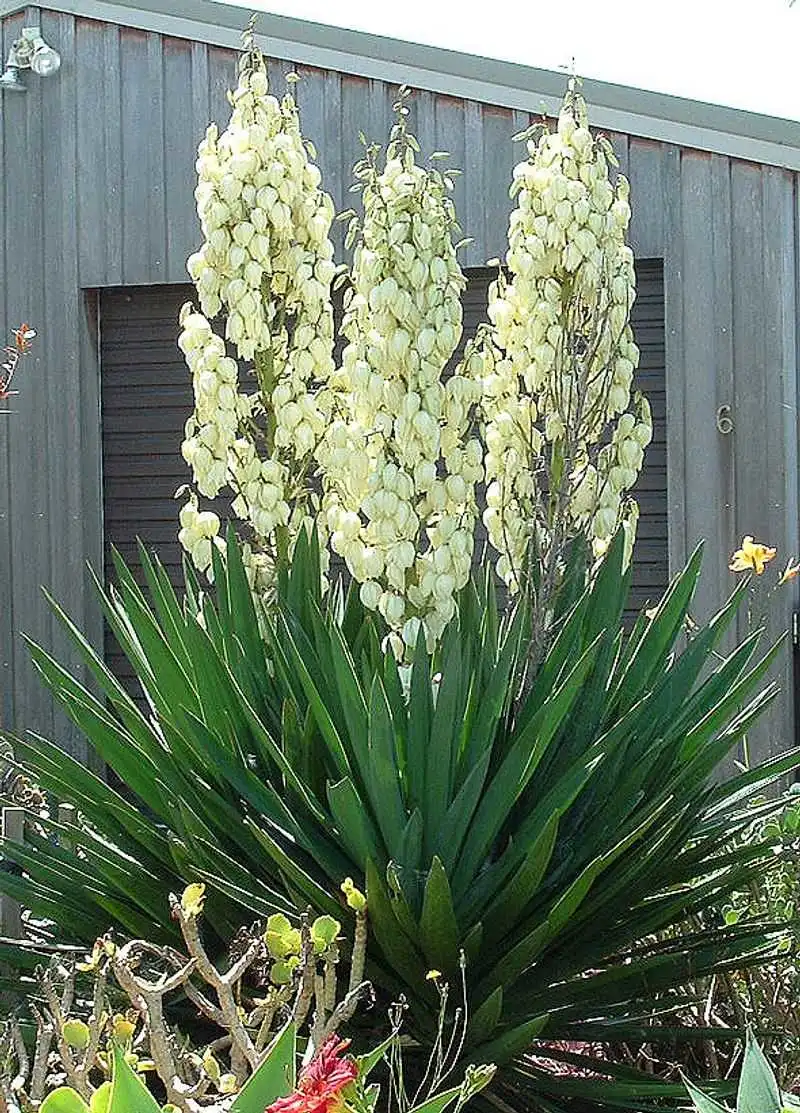
Yucca is a bold choice for any coastal garden, known for its architectural shape and resilience. Its sharp, sword-like leaves create a striking silhouette against sandy dunes.
This evergreen requires little water and thrives in sandy, well-drained soils. Yuccas are also remarkably tolerant of salt spray and harsh winds.
When in bloom, it produces tall spikes adorned with creamy-white flowers, adding vertical interest to the garden design. Yucca’s dramatic presence makes it a garden centerpiece.
Sea Grape (Coccoloba uvifera)

Sea Grape is a tropical plant featuring large, leathery leaves and clusters of edible purple fruit. Its adaptability to sandy soils and salt tolerance make it perfect for coastal gardens.
This versatile plant can be pruned into a shrub or allowed to grow into a small tree, providing shade and privacy. Its red-tinted branches and foliage add color variation.
Beyond aesthetics, the sea grape’s fruit can be used to make jellies and wines, offering a culinary bonus to this ornamental plant.
Creeping Thyme (Thymus serpyllum)

Creeping Thyme is a delightful groundcover that not only withstands coastal conditions but also releases a pleasant aroma when walked upon. Its tiny pink or purple flowers attract bees and butterflies.
This perennial herb thrives in sandy soils and full sun, making it well-suited for coastal gardens. Its low-growing habit helps control erosion and stabilize sandy soil.
Creeping Thyme requires minimal care, making it an ideal choice for gardeners seeking beauty with ease. Its fragrance enhances outdoor experiences.
Sand Dune Sedge (Carex pansa)

Sand Dune Sedge is a hardy grass-like plant that thrives in the harsh conditions of coastal environments. Its fine, green blades grow in dense clumps, providing excellent erosion control.
This native sedge is drought-tolerant and can handle both salty air and sandy soils. Its creeping root system stabilizes dunes and sandy areas, making it a valuable plant for coastal conservation.
With its low maintenance needs and adaptability, Sand Dune Sedge is ideal for those looking to create a natural, sustainable landscape.
Ice Plant (Delosperma cooperi)
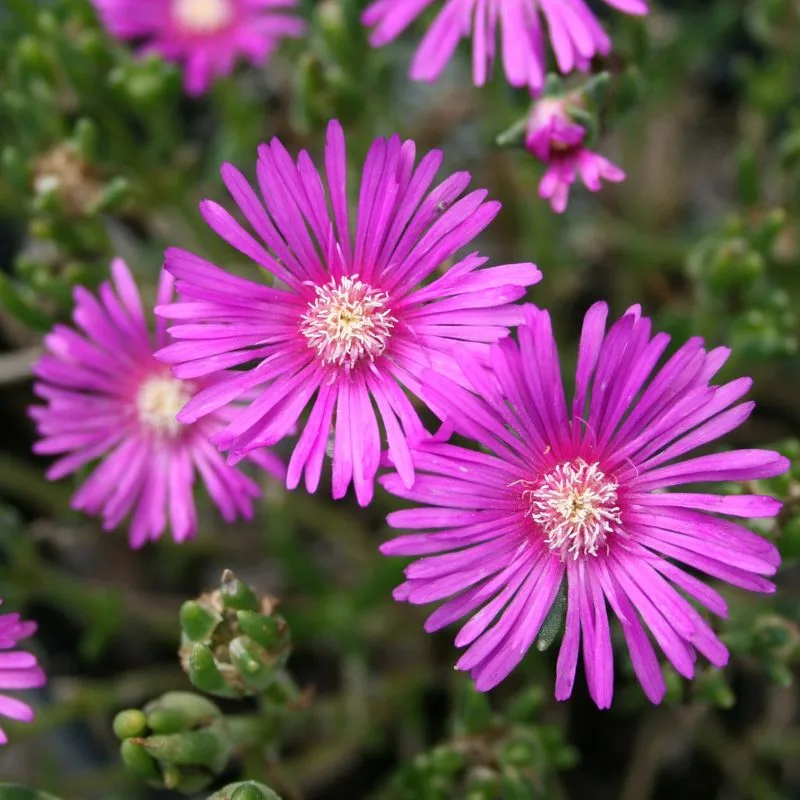
Ice Plant is a vibrant addition to any coastal garden, known for its succulent leaves and dazzling purple flowers. It’s perfect for covering sandy areas, thanks to its spreading habit.
This drought-tolerant plant flourishes in poor, sandy soils and is resistant to salt spray. Ice Plant’s fleshy leaves store water, allowing it to thrive in dry conditions.
Its lively blooms attract pollinators and provide a burst of color that can brighten any landscape. Its easy-care nature makes it a gardener’s favorite.
Beach Grass (Ammophila breviligulata)
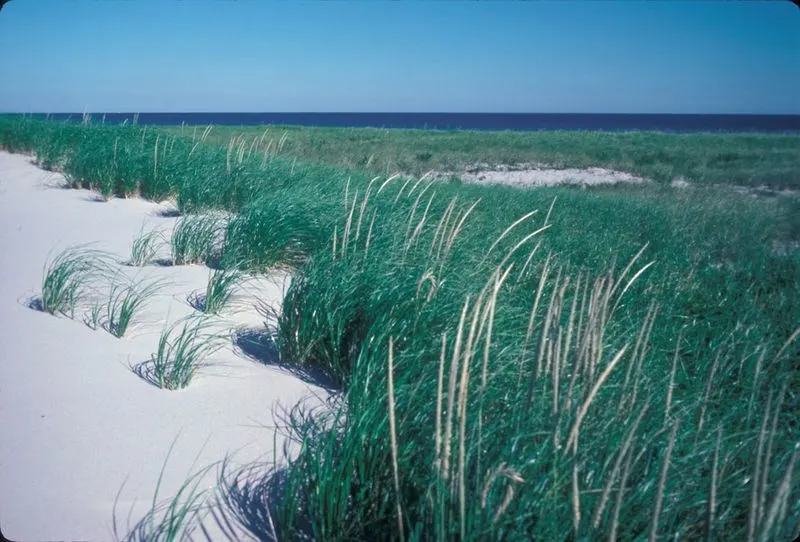
Beach Grass is essential for coastal gardens, particularly for its role in stabilizing sand dunes. Its long, flowing blades are naturally adapted to withstand the rigors of salty winds and shifting sands.
This grass is highly effective at anchoring loose soil, preventing erosion, and creating a natural barrier against wind.
In addition to its practical uses, Beach Grass adds a gentle, wave-like motion to the landscape, echoing the nearby ocean. Its resilience makes it a keystone species for coastal areas.
Rock Samphire (Crithmum maritimum)
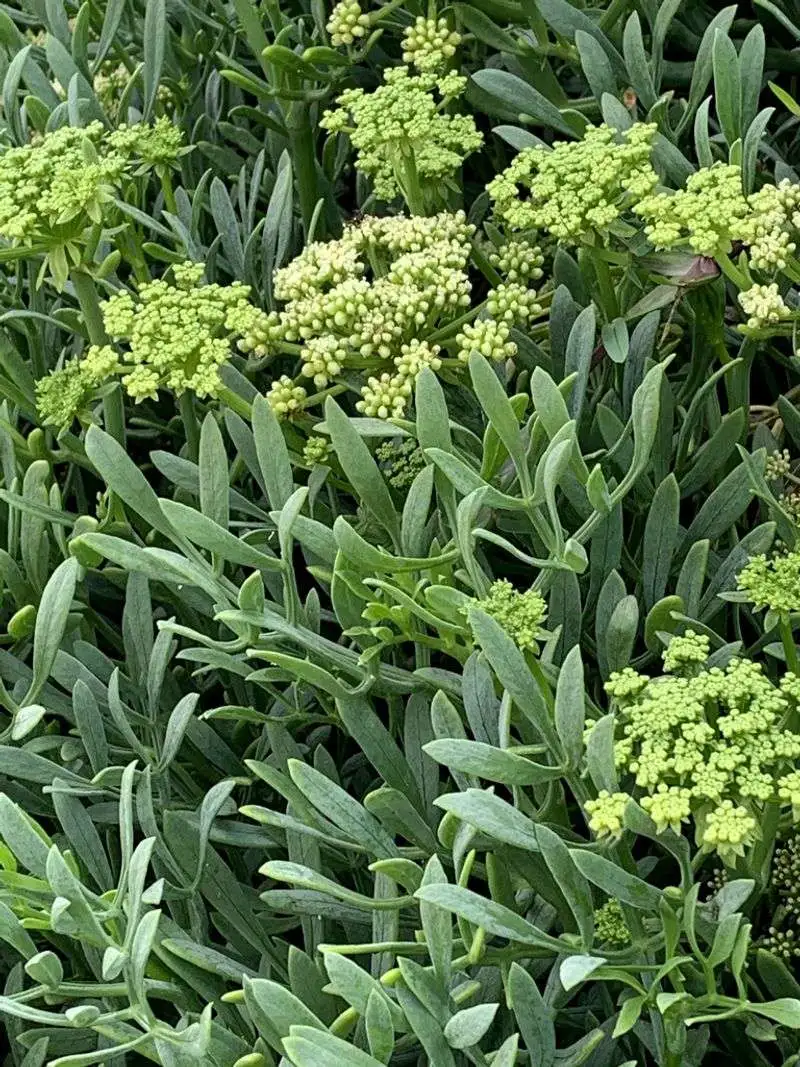
Rock Samphire is a coastal treasure known for its succulent, aromatic leaves and tiny yellow flowers. Often found growing in rocky, saline environments, it thrives where lesser plants struggle.
This perennial is not only a visual delight but also a culinary one, as its leaves can be pickled or used fresh in salads for a salty crunch.
Rock Samphire is highly tolerant of salty air and poor, rocky soils, making it an ideal choice for coastal gardeners seeking both beauty and utility.
Russian Sage (Perovskia atriplicifolia)
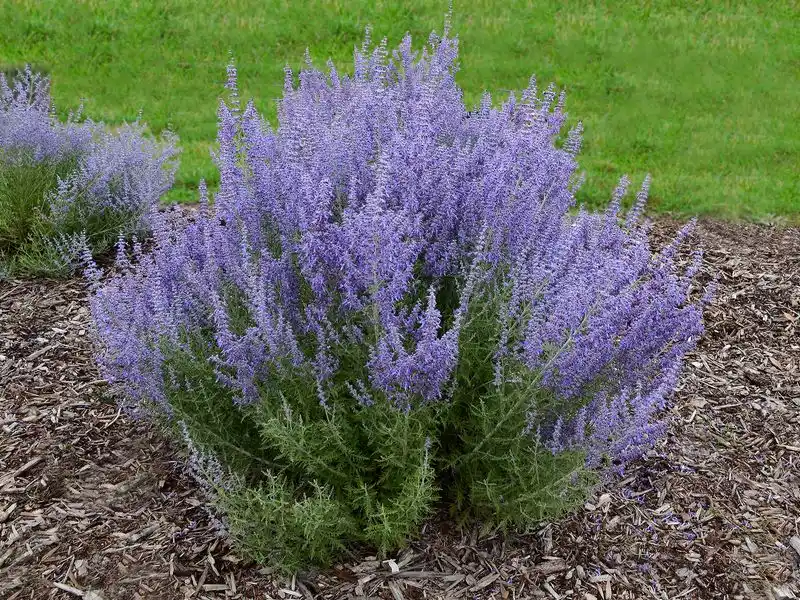
Russian Sage is a robust perennial that adds a touch of elegance with its tall, silvery stems and lavender blooms. It is exceptionally drought and salt-tolerant, thriving in poor, sandy soils.
This plant’s aromatic foliage releases a pleasant fragrance when brushed against, adding sensory delight to your garden.
Russian Sage draws pollinators like bees and butterflies, supporting local ecosystems. Its airy structure provides a contrast to denser plantings, enhancing the visual texture of your garden.
Lantana (Lantana camara)
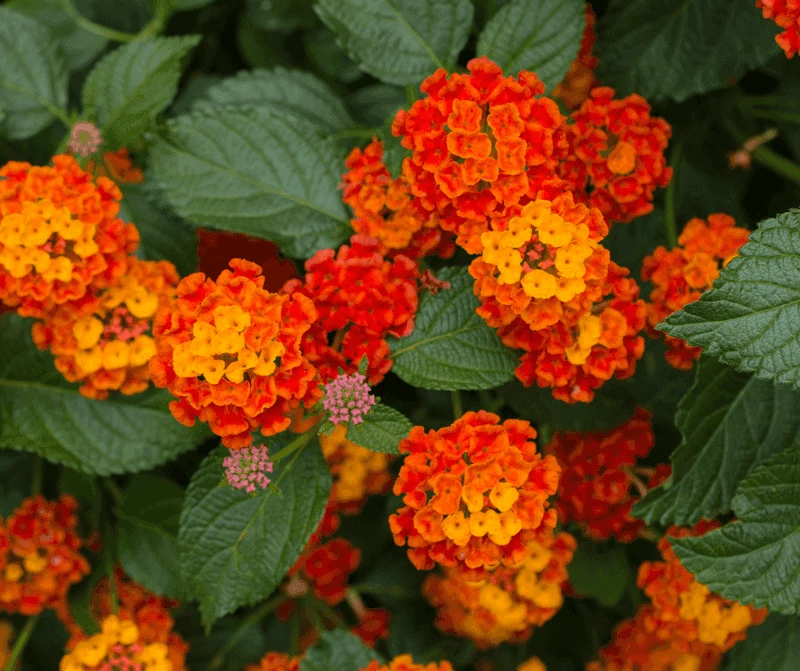
Lantana is a vibrant plant, celebrated for its clusters of small, multi-colored flowers. It thrives in sunny, coastal gardens where it can bask in full sunlight.
This hardy plant is salt-tolerant and can endure periods of drought, making it an excellent choice for xeriscaping. Lantana’s flowers attract butterflies, bringing life and movement to the garden.
Its ability to withstand tough conditions with minimal care makes it a popular choice for gardeners looking to add color without hassle.
Oleander (Nerium oleander)
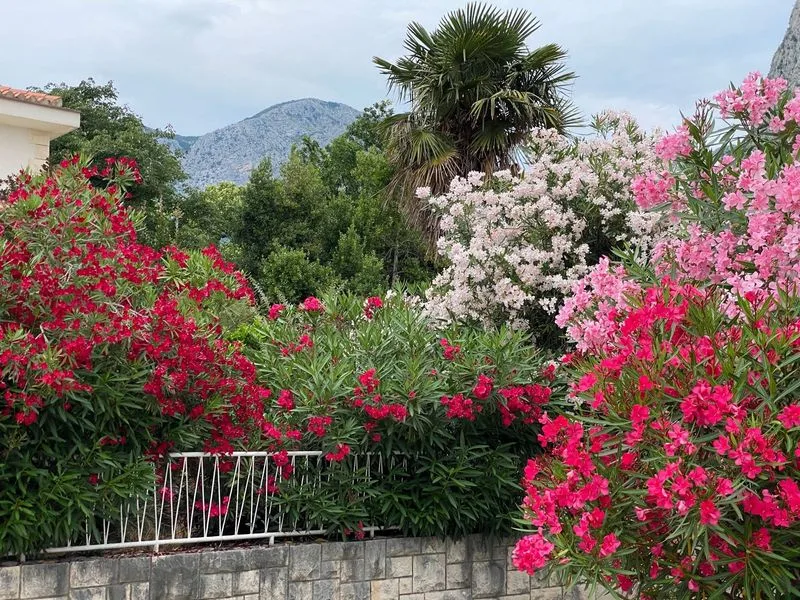
Oleander is a stunning evergreen shrub admired for its lush green leaves and profuse flowers that range from white to deep pink. While all parts are toxic if ingested, it remains popular for its beauty and resilience.
This plant flourishes in sandy soils and tolerates salty winds, making it a staple for coastal gardens. Oleander blooms throughout the warmer months, adding consistent color.
Despite its toxic nature, it is prized for its ability to thrive on neglect, proving its worth in challenging environments.
Agave (Agave americana)
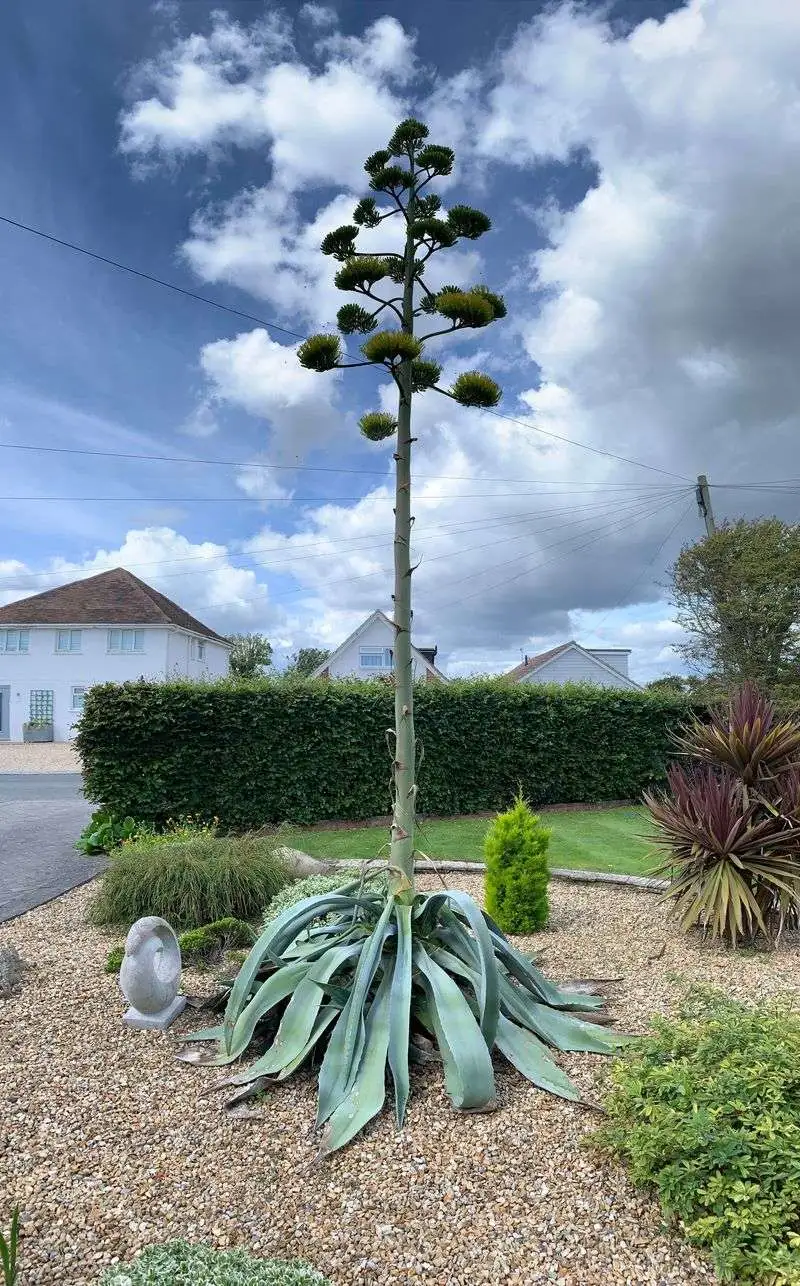
Agave is a striking succulent known for its thick, spiky leaves and impressive flower stalks that can reach towering heights. It thrives in sandy, well-drained soil typical of coastal regions.
With its dramatic shape and size, Agave serves as a focal point in any garden. It requires minimal water and can withstand the saline air that comes with proximity to the ocean.
Agave’s resilience and unique appearance make it a popular choice for gardeners looking to add a bold, architectural element.
Cordyline (Cordyline australis)
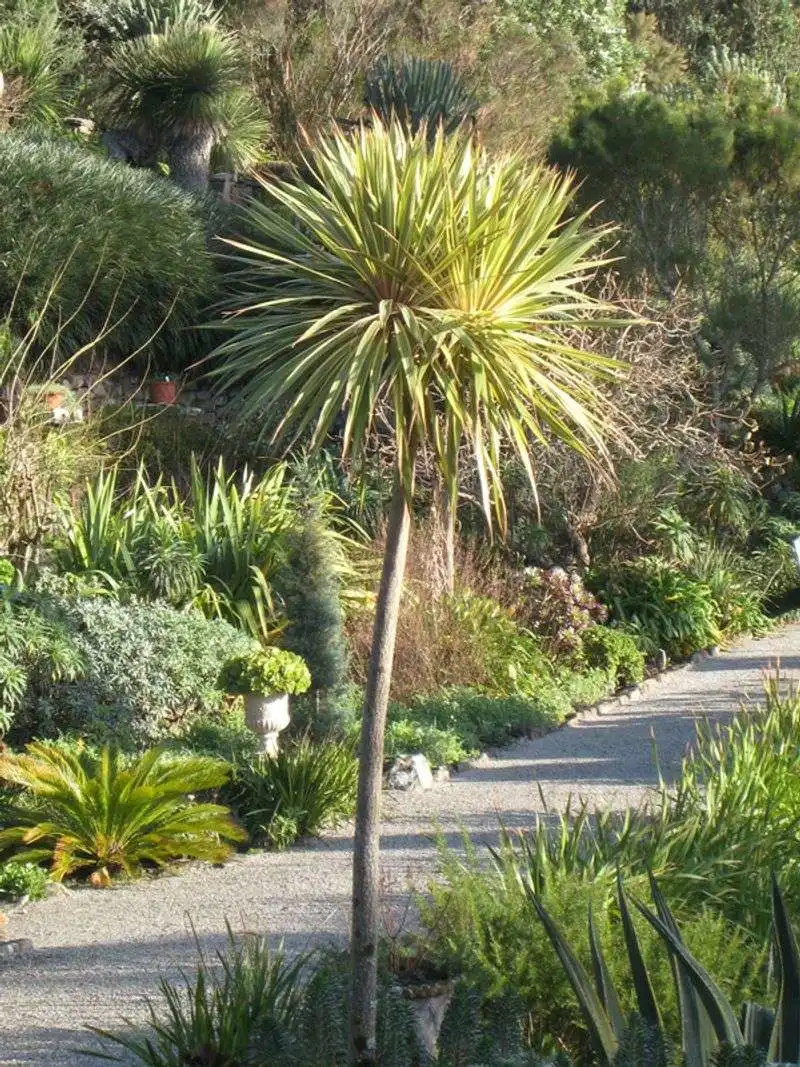
Cordyline, often called Cabbage Tree, is treasured for its tall, slender trunks and lush, sword-like leaves. It thrives in coastal gardens, where it can enjoy sandy soils and withstand salty winds.
This plant is drought-tolerant and requires minimal care, making it ideal for low-maintenance landscapes. Its striking silhouette adds height and drama to garden designs.
Cordyline’s adaptability and exotic appearance have made it a favorite among coastal gardeners seeking a touch of the tropics.
Bayberry (Myrica pensylvanica)
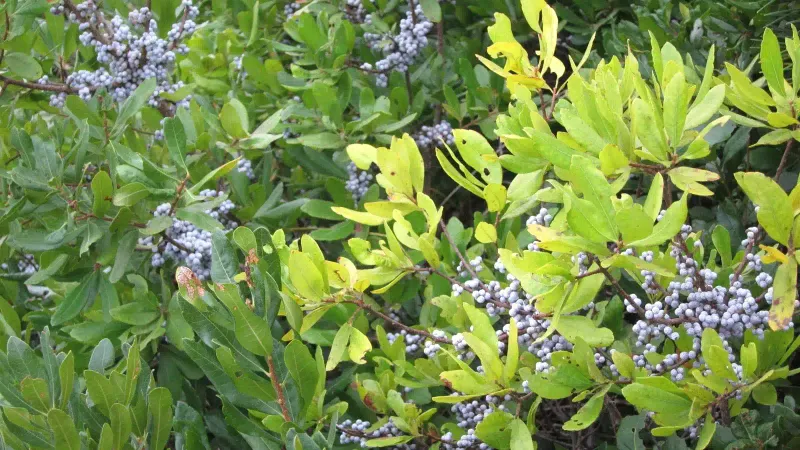
Bayberry is a hardy shrub known for its aromatic foliage and clusters of small, waxy berries. Its ability to thrive in sandy, salty conditions makes it a natural fit for coastal gardens.
This shrub can be used to create natural windbreaks or privacy screens, offering both beauty and function. The wax from its berries is traditionally used to make candles.
Bayberry’s resilience and versatility make it a cherished addition to any coastal landscape, adding both fragrance and ornamental value.
Seaside Daisy (Erigeron glaucus)
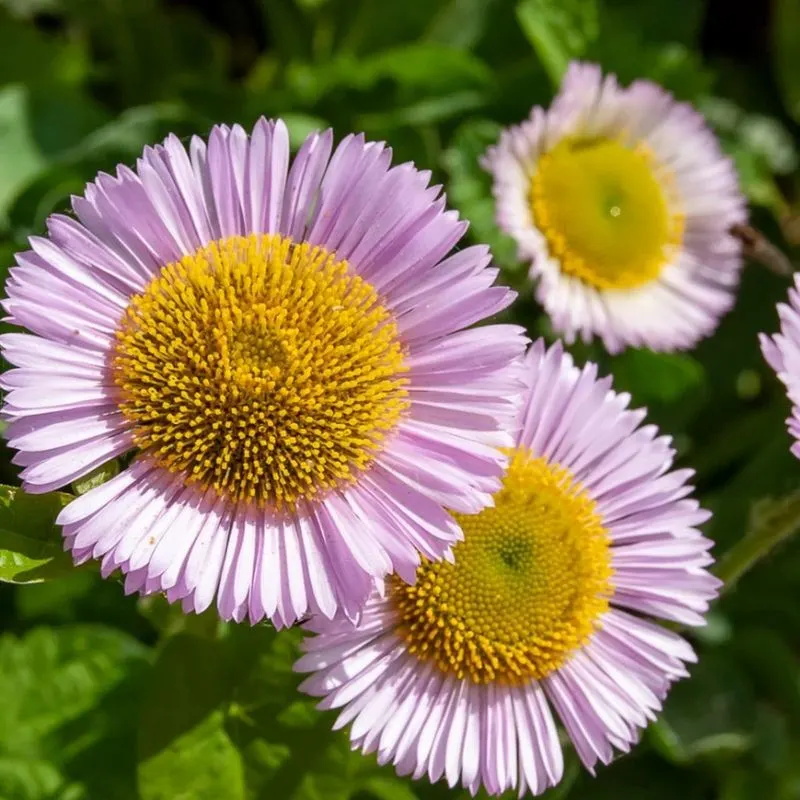
Seaside Daisy, with its charming purple petals and cheerful yellow centers, is a coastal garden’s delight. This hardy perennial thrives where others falter. Whether basked in the sun or kissed by sea breezes, it flourishes in sandy soils.
It’s not just a pretty face; it’s a powerhouse against erosion. Its dense foliage offers protection, securing the soil beneath.
Incorporating Seaside Daisy into your garden adds a splash of color and an air of resilience. Did you know? Its drought-resistant nature makes it a low-maintenance, eco-friendly choice for garden enthusiasts.

